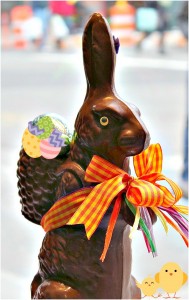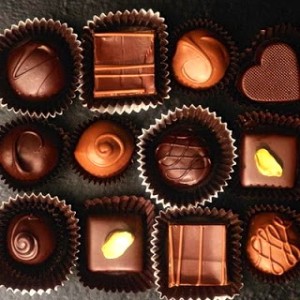 Do you have a thing for those fluorescent marshmallow bunnies and chicks that were hatched over 50 years ago? They got their name – PEEPS — because they were originally modeled after the yellow chick. Now they’re made for Christmas, Halloween, and Valentine’s Day, too — so you can get them in yellow pink, blue, lavender, orange, and green shapes that represent the different holidays. They come chocolate dipped, too.
Do you have a thing for those fluorescent marshmallow bunnies and chicks that were hatched over 50 years ago? They got their name – PEEPS — because they were originally modeled after the yellow chick. Now they’re made for Christmas, Halloween, and Valentine’s Day, too — so you can get them in yellow pink, blue, lavender, orange, and green shapes that represent the different holidays. They come chocolate dipped, too.
PEEPS continue to be the subject of lots of design contests (you’d be amazed what you can make out of peeps) and scientific experiments (some claim them to be indestructible). Just Born, the parent company of PEEPS, claims to produce enough PEEPS in one year to circle the Earth twice. Their website even boasts a fan club and a section for recipes.
Do You Like Your PEEPS Soft Or Crunchy?
People have definite PEEPS preferences. Some like them nice and soft, others like to leave them out in the air to age to perfection so they get a little crunchy on the outside.
They’ve been microwaved (careful, they expand and can really make a mess in your microwave), frozen, roasted, used to top hot chocolate, and added to recipes. But they don’t toast well on sticks like regular marshmallows because their outer sugar coating tends to burn.
Millions of Peeps
During the Easter season Americans buy more than 700 million PEEPS that are shaped like chicks, bunnies and eggs although the iconic yellow PEEP is still the most popular choice.
As many as 4.2 million PEEPS can be made daily. In 1953 it took 27 hours to create a PEEP. It takes six minutes today.
Newspapers have been known to run contests for best PEEP recipes and best PEEP pictures, and, in a world of contrasts I’ve spotted a blackboards outside of bars in NYC advertising PEEP contests and a kids’ stores using boxes and boxes of PEEPs for window decorations.
What’s In Them?
Send a PEEP for lab analysis and you’ll find sugar, corn syrup, gelatin, less than 0.5% of potassium sorbate, natural flavors, dye, and carnauba wax. They’re gluten and nut free but are not Kosher. (No wonder some claim that they’re indestructible!) You can even get sugar free PEEPS that are made with Splenda.
If PEEPS are part of your Easter ritual, even though they’re filled with sugar and all kinds of dyes and chemicals, for a seasonal treat, calorically you could do worse.
Five little chicks (42g, one serving size) will set you back 140 calories; 0g fat; 1g protein; and 36g carbs.
Easter Candy Tally
 Eating 25 small jelly beans, 5 Peeps, a 1 3/4 ounce hollow chocolate bunny, and 1 Cadbury Creme Egg, which is not an unusual amount of Easter candy, tallies 730 calories.
Eating 25 small jelly beans, 5 Peeps, a 1 3/4 ounce hollow chocolate bunny, and 1 Cadbury Creme Egg, which is not an unusual amount of Easter candy, tallies 730 calories.
You’d need to walk 7.3 miles, 11.77 kilometers, or 14600 steps, assuming you cover one mile in 2,000 steps to walk off that number of calories. Sounds like a lot, but very doable over a few days.



